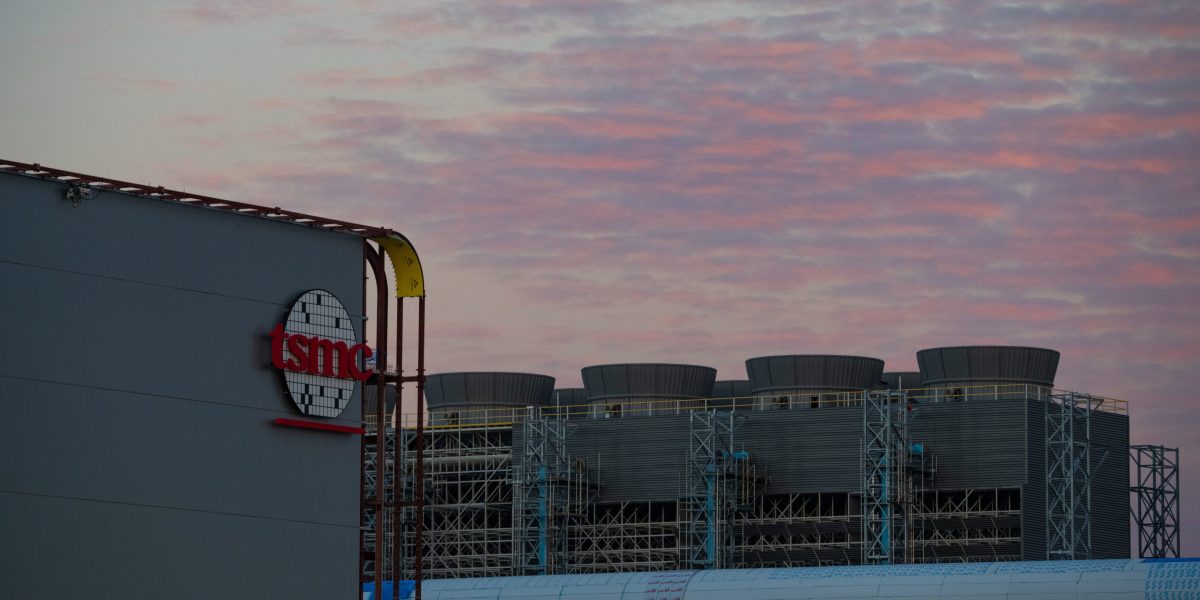This post was originally published on this site
https://fortune.com/img-assets/wp-content/uploads/2024/04/GettyImages-1245437477-e1712607474102.jpg?w=2048
The Commerce Department announced Monday it pledged up to $6.6 billion to Taiwanese semiconductor manufacturer TSMC, which will add a third chip manufacturing facility in Arizona to the two in the works. The grant will go down in Washington as one of the crown jewels of the Biden administration’s initiative to bring the supply chain for ubiquitous—and strategically vital—computer chips back to the United States.
But in Phoenix, where the factories are going to be built, TSMC faces a lingering question: where’s the water going to come from in one of the driest cities in the country?
Semiconductor manufacturing requires water, and lots of it. The global industry consumes almost as much water as New York City does, according to a S&P Global Ratings report, which flagged water supply as a potential threat.
“We view water scarcity as a risk in the coming decade for the tech hardware industry, particularly the water-intensive semiconductor subsector,” S&P warned in February. “Mishandling of such a risk could hit a chipmaker’s operations and creditworthiness.”
Phoenix has been in a drought for well over a decade. In fact, Arizona put limits on some new housing developments last year because there isn’t enough groundwater to go around. But local officials say the city has enough water for TSMC, and potentially even more companies, as the region emerges as a top chip hub.
“When you’re dealing in a limited and precious resource like water, if you’re using a lot of water for one [facility], it’s an economic tradeoff,” Cynthia Campbell, Water Resources Management Advisor for the city of Phoenix, told Fortune. “We do [have enough water.]”
Semiconductor fabs rely on water to clean the tiny silicon wafers that computer chips are built on. And as design companies such as Arm and Nvidia have developed new, more complex cutting-edge chips to support tech like AI, TSMC has required even more water to build them. TSMC’s water usage per unit has been trending up in recent years, though it’s also reusing water and aims to achieve a 90% recycling rate.
Still, some experts question the actual benefits.
“90% recycling sounds really good,” said Josh Lepawsky, a professor at the Memorial University of Newfoundland and Labrador and an expert in resource use and waste in the electronics industry. “Maybe this is obvious, but 90% means that by definition, 10% is lost, or not recycled. Every 10 days, you’ve got a 100% need for ‘new water.’”
In addition to water usage, chipmakers produce wastewater as production relies on chemicals that have harmful or unknown environmental impacts. Last August, a coalition of semiconductor manufacturers argued against a proposed EPA regulation to ban PFAS, commonly known as “forever chemicals,” writing that it would prevent the industry from making devices in the U.S. and warning the “economic consequences of such a summary action by EPA are immeasurable.”
For its part, TSMC’s wastewater discharge decreased 30% between 2018 and 2022, and the company has committed to a “near zero” wastewater discharge rate for its three Arizona fabs. But again, that draws skepticism.
“Near zero wastewater discharge…there’s no number on that,” Lepawsky said. “Is that 0.1? 1? 10?”
Phoenix’s Campbell said that city water officials still don’t know what TSMC’s precise discharge rate will be, but that authorities have been in close communication with the company about its water use and treatment plans. TSMC and the Commerce Department did not immediately respond to requests for comment.
TSMC doesn’t expect all three fabs to come online until 2028, and they’ll likely be in service for decades. Lepawsky said that water conditions could worsen in Phoenix over that timeline. But after investing $65 billion of its own money into the fabs alongside federal grant money, moving to greener pastures (literally) would be a tough pill to swallow for TSMC.
“These are facilities where you’re expecting to be producing for 10, 20, 30 years. That’s climate change timelines,” Lepawsky said. “When you’re using billions of dollars to build a new facility…at those kinds of magnitudes, you’re not just going to pick it up and move it somewhere else if water conditions deteriorate to the point where that’s an issue.”
Other Arizona officials have dismissed claims that water scarcity presents a significant challenge for TSMC: Arizona Chamber of Commerce and Industry CEO Danny Seiden wrote in an op-ed last August that increases in water efficiency and conservation will allow Arizona to meet water demands, pointing to TSMC competitor Intel’s Chandler, Ariz. plant, which treats more than 9 million gallons of water a day at its on-site reclamation facility.
As Arizona continues to position itself as a semiconductor manufacturing hub, Campbell said Phoenix’s water supply is capable of handling more projects—as long as they line up with expectations.
“Water is not infinite. There is a limitation at some point in time, but we don’t see things hitting a wall based on the plans we’ve seen,” he predicted.




